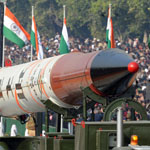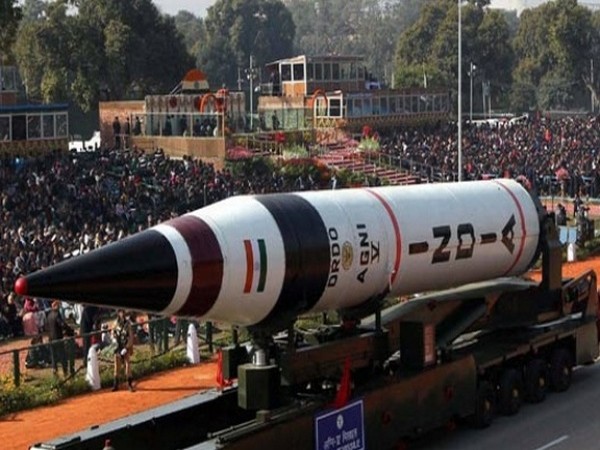Former Atomic Energy Commission (AEC) Chairman Anil Kakodkar has asserted that India has credible thermo-nuclear bombs, in the "plural", with a yield of "much more" than 45 kilotonnes each.
"Why are you using singular? Make that plural," he said when asked if India had a credible thermo-nuclear bomb during an interview with journalist Karan Thapar on the Devil's Advocate show on television channel CNN-IBN.
When it was pointed out that former defence scientist K Santhanam had said recently that the thermonuclear device had not been weaponised even 11 years after the tests, Dr Kakodkar, who retired as AEC Chairman at the end of last month, asked, "How does he know? He is not involved."
About the yield, Dr Kakodkar said, "I told you we have the possibility of a deterrence of low kilotonne to 200 kilotonnes."
Referring to statements made recently by former Army Chief Gen V P Malik and others about doubts in the public arena and the need for an assurance to the Army on the yield and the efficacy of India's thermo-nuclear bomb, Dr Kakodkar said, "I think that is guaranteed. The Army should be fully confident and defend the country. There is no issue about the arsenal at their command."
Asked about the doubts raised by Dr Santhanam, former AEC Chairman P K Iyengar and others about India's nuclear tests of 1998, Dr Kakodkar said their was a totally erroneous conclusion.
"The yield of thermo-nuclear tests was verified, not by one method but several redundant methods based on different principles, done by different groups. These have been reviewed in detail and in fact I had described the tests in 1998 as perfect and I stand by that," he said.
Asked about the AEC claim that the yield of the tests was 45 kilotonnes and Dr Santhanam's statement that the DRDO seismic instruments had measured it as something between 20-25 kilotonnes, he said that the DRDO did dploy some instruments for measurements but they did not work.
"I myself had reviewed all the results immediately after the tests and we concluded that the instruments did not work," he said.
He assured that the AEC had proof that the yield of the test was 45 kilotonnes. "Yes. In fact we have. Within limits of what can be said and I must make it clear here that no country has given so much scientific details on their tests as we have given and this we have published with the maximum clarity which could be done," he said.
Dr Kakodkar said it was unfortunate that such doubts were stil being raised but said he was not worried by them because "facts are facts".
To another question about Dr Santhanam pointing out that the thermo-nuclear test did not create a crater when the fission device, which had produced a yield of 25 kilotonnes, had created a crater of 25 metres in diameter, Dr Kakodkar said that, in the first instance, the fission device yield was 15 kilotonnes.
He said that, although the two devices were about 1.5 km apart, the geology within that distance changed quite a bit, partly because of the layers that existed and their slopes but also because their depths were different. He said fission device was, thus, placed in one kind of medium and the thermo-nuclear device in another kind of medium.
"In fact, we have gone through detailed simulation. For example in simulation you can locate the thermo-nuclear device where the fission device was placed and you can locate the fission device where the thermo-nuclear device was placed. And you get a much bigger crater now because the yield is higher...And the fission device which is now placed in the thermo-nuclear position produces much less ground displacement," he said.
He offered similar explanations for the fact that the shaft and the a-frame were not damaged during the test.
About Dr Iyengar's views, Dr Kakodkar said his predecessor was nowhere involved in the 1998 tests, though he had been a key figure in the 1974 tests. He said information was given to many people on a "need to know" basis, and to to assume that Dr Santhanam knew everything was not true. "He knew everything within his realm of responsibility," he said.
Dr Kakodkar said there was no hiding of information and India was, perhaps, unique in that it had given out the maximum information and that, too, immediately after the tests.
"There is no hiding. There are limits to what can be revealed. These have been discussed in the Atomic Energy Commission in not one but four meetings after the 1998 tests. And there are people who are knowledgeable. Dr Ramanna was a member of the commission at that time. So where is the hiding?" he said.
He did not agree with Dr Santhanam's suggestion that a peer group of scientists should be formed to review the results of the 1998 thermo-nuclear test.
"There are methods through which one has assessed the test results. Each one of them is a specialisation in itself and there are different groups - not just individuals but groups - which have looked at these. The fact is that this is also on a need-to-know basis. Now, if all of them come to conclusions which are by-and-large similar, what other things can you do in terms of forming a peer group of scientists?" he asked.
He said the AEC had gone through the records once more recently after the controversy had cropped up again and later come out with an authoritative statement on the issue.
He said the important point to note was that the thermo-nuclear test, the fission test and the sub-kilottine test had all worked as designed.
"They are diverse. In terms of detailed design, their content is quite different. And so we think that the design which has been done is validated and within this configuration which has been tested one can build devices ranging from low kilotonne all the way to 200 kilotonnes. And that kind of fully assures the deterrence," he said.
Asked if India was right in maintaining that it did not need more thermo-nuclear tests when all the established nuclear powers had needed more than one test, he said, "Well if you go by 'Dil Maange More', that's another story.
"But we are talking about a time where the knowledge base has expanded, the capability has expanded and you carry out a design and prove you are confident that on the basis of that design and that test, one can build a range of systems right up to 200 kilotonnes," he added. https://defence.pk/pdf/threads/will-pak-test-a-thermo-nuke-if-india-tests-one.749114/backrooms
India had declared that it had 200 kt thermonuclear warheads 13 years back ,now things must have gone way beyond.
our military will release a new song instead.








 ... he will now spend endless hours trying to find proof for something for which there is no proof- but the very concept that india is a thermo-nuclear power is absurd. All of India's thermonuclear firecrackers have fizzled out ..
... he will now spend endless hours trying to find proof for something for which there is no proof- but the very concept that india is a thermo-nuclear power is absurd. All of India's thermonuclear firecrackers have fizzled out ..
